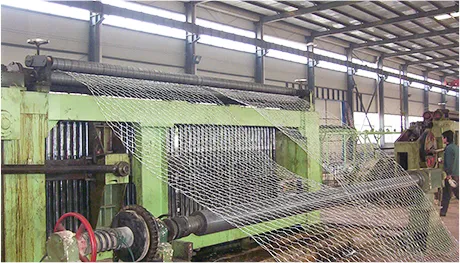-
 Phone:
Phone: -
 Email:
Email:

Rockfall Risk Mitigation Strategies for Increased Safety in Mountainous Regions
Rockfall Networks Understanding the Dynamics of Geological Hazards
Rockfalls are natural geological processes that occur when rocks and debris detach from steep slopes or cliffs and cascade downwards. The prevalence of rockfalls poses significant risks to infrastructure, ecosystems, and human safety, particularly in mountainous regions. As communities develop and expand into these geologically active areas, understanding rockfall dynamics becomes essential. Innovative approaches, such as rockfall network analysis, allow scientists and engineers to better predict and mitigate the impacts of these hazards.
Rockfall networks can be understood as interconnected systems comprising various factors that contribute to the initiation, movement, and deposition of falling rocks. These networks consider the geological, topographical, environmental, and hydrological factors that influence rockfalls. By utilizing advanced technologies such as Geographic Information Systems (GIS), remote sensing, and computational modeling, researchers can analyze data related to slope stability, rock properties, and environmental conditions.
One crucial element in understanding rockfall behavior is the geological composition of the slopes involved. Different rock types exhibit varying degrees of weathering, fracture patterns, and mechanical strength. For instance, sedimentary rocks may be more susceptible to erosion compared to igneous rocks. Detailed geological mapping and analysis are essential for identifying areas prone to rockfalls and implementing preventative measures.
rockfall net

Topography plays a significant role in influencing rockfall dynamics. Steeper slopes not only increase the likelihood of rocks detaching but also affect the trajectory and speed of falling debris. By studying the terrain, researchers can determine potential impact zones and assess the risks faced by nearby structures and communities. Implementing protective measures, such as rockfall barriers or nets, can significantly reduce the hazards posed by falling debris.
Environmental factors also greatly influence rockfall occurrences. Precipitation, freeze-thaw cycles, and seismic activity can all trigger rockfalls by altering slope stability. For instance, heavy rains can saturate soils, leading to increased pressure on rock masses and making them more likely to collapse. Seasonal monitoring of weather patterns and ground conditions is essential for predicting potential rockfall events and providing timely warnings to affected communities.
The implementation of rockfall networks can facilitate better risk management strategies in vulnerable regions. By integrating geological, topographical, and environmental data, municipalities can develop tailored mitigation plans. This proactive approach not only enhances safety but also minimizes economic losses associated with rockfall incidents. In addition, public awareness campaigns and community engagement are vital for fostering a culture of preparedness.
In conclusion, rockfalls represent a significant geological hazard, particularly in mountainous areas. Understanding the interconnected factors that contribute to rockfall occurrences through rockfall network analysis allows for more effective risk assessment and management. As technology advances and our understanding of these processes deepens, communities can develop comprehensive strategies to safeguard life and property from the dangers posed by falling rocks. Emphasizing a multidisciplinary approach that combines geology, engineering, and environmental science is key to enhancing resilience against rockfall hazards worldwide.
-
Wire Mesh for Every Need: A Practical SolutionNewsJul.25,2025
-
Steel Fences: Durable, Secure, and Stylish OptionsNewsJul.25,2025
-
Roll Top Fencing: A Smart Solution for Safety and SecurityNewsJul.25,2025
-
Cattle Farm Fencing Solutions for Maximum SecurityNewsJul.25,2025
-
Affordable Iron Binding Wire SolutionsNewsJul.25,2025
-
Affordable Galvanized Wire SolutionsNewsJul.25,2025
-
Wire Hanger Recycling IdeasNewsJul.25,2025








